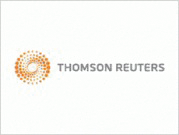Accounting
Report Focuses on New Accounting Model for Leases
Leasing is an important source of financing for many entities in the United States and around the globe. Many entities enter into leasing arrangements to gain access to assets, obtain financing, or reduce exposure to the risks of ownership of an asset.
Jul. 26, 2016

Thomson Reuters has released a special report providing an overview of the FASB’s new lease accounting guidance for both lessees and lessors under US Generally Accepted Accounting Principles (GAAP).
Leasing is an important source of financing for many entities in the United States and around the globe. Many entities enter into leasing arrangements to gain access to assets, obtain financing, or reduce exposure to the risks of ownership of an asset. Yet the current accounting model for leases does not require lessees to recognize assets and liabilities arising from operating leases.
“The new lease accounting guidance represents a significant change for lessees, and companies will have to understand the details of the new guidance to be able to adopt it,” said Anne-Lise Vivier, CPA, managing editor of accounting publications for Thomson Reuters and coauthor of the report. “Both lessees and lessors have to assess how pervasive the changes are to their specific situations in order to ensure smooth adoption of the new leasing standard.”
The free report is available for download at tax.thomsonreuters.com/Checkpoint-Catalyst-US-GAAP/lease-accounting-model.
Thomson Reuters Checkpoint tackles market disruption through integrated research, editorial insight, productivity tools, online learning and news updates along with intelligent links to related content and software. It is relied on by hundreds of thousands of tax and accounting professionals, and counts among its customers 97 of the Top 100 U.S. law firms, 99 of the Fortune 100 companies, and all of the top 100 U.S. CPA firms.
